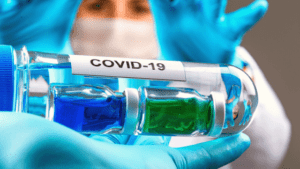While CMS had introduced new CPT code changes for 2021, ICD-10-CM coding changes have a lot to revise and get used to the latest updates. The medical coding changes for 2021 are minimal and also straightforward. But surprisingly, most of the updates and guidelines have focused on reporting and coding Covid-19.
ICD-10-CM Official Guidelines for Coding and Reporting includes a lot of new COVID-19 guidelines of which the changes complement the first set of coding in the month of April. Of course there are many examples in which the guidelines from April is relevant to that includes appropriate latest Information.
New and Revised ICD-10-CM coding Guidelines for Covid-19:
- When Covid-19 hits the principal diagnosis, the code U07.1 for Covid-19 must be progressed initially. It should be followed by accurate coding system for associated manifestations instead of any other guidelines that requires certain codes to be progressed initially involving obstetrics, sepsis and transplant issues.
- April guidelines had guided healthcare professionals to sequence the first or initially listed diagnosis with the code U07.1 followed by manifestation codes excluding the cases of obstetrics patients.
- From the month of October, it will be effective and is expanded in order to include other clinical scenarios as well involving existing ICD-10-CM changes in guidelines sequencing with sepsis and transplant complications.
- Covid-19 guidelines have been also modified from April month’s guidelines introduction.
- Section I.C.1.g.1.e – Exposure to COVID-19
- Section I.C.1.g.1.f – Screening for COVID-19
- Section I.C.1.g.1.g – Signs and symptoms without definitive diagnosis of COVID-19
- Section I.C.1.g.1.h – Asymptomatic individuals who test positive for COVID-19
New Covid-19 coding Guidelines:
- The below guidelines were added from the initial times of April month’s introduction and installment.
- Section I.C.1.g.1.c. – Acute respiratory failure
- Section I.C.1.g.1.d – Non-respiratory manifestations of COVID-19
- Section I.C.1.g.1.i – Personal history of COVID-19
- Section I.C.1.g.1.j – Follow-up visits after COVID-19 infection has resolved
- Section I.C.1.g.1.k – Encounter for antibody testing
Obstetrics Addition Guidelines:
- Few revisions to have a glance from April month’s supplemental guidelines to the following areas:
-
Section I.C.15.s – COVID-19 infection in pregnancy, childbirth, and the puerperium.
- ICD-10-CM changes explain few additional contexts to learn and know about.
- When the patient is not admitted or encountered unrelated to Covid-19, but the patient is tested positive during the admission or interaction with physician, the accurate code for the reason for admission or encounter must be sequenced as first listed or initial listed diagnosis for which the codes are 098.5 and U07.1 attached with manifestation and must be assigned like additional diagnosis.
-
Section I.C.16.h – COVID-19 infection in newborn
- If a newborn is tested positive for Covid-19, then assign the code U07.1 along with appropriate codes and manifestations in newborns indicating specific type of transmission in the absence of documentation.
- When a newborn tests positive for Covid-19, the healthcare professionals document the exact condition which was contracted during the process of birth. The code assigned is P35.8 for others congenital viral diseases and U07.1 for Covid-19.
- Beyond that, while coding the birth episode in newborn record, the accurate code from category Z38 must be according to the place of birth and the type of delivery including principal diagnosis.
Ensure appropriate ICD-10-CM coding:
- Let’s take notice of the modifications to the following COVID-19 guidelines:
- Section I.C.1.g.1.c – Acute respiratory manifestations of COVID-19:
The first subsection, Pneumonia, instructs to report codes U07.1 COVID-19 and J12.82 Pneumonia due to coronavirus disease 2019 for a patient with pneumonia confirmed as due to COVID-19. Code J12.82 replaces J12.89 Other viral pneumonia.
- Section I.C.1.g.1.e – Exposure to COVID-19:
Use the code Z20.822 Contact with and suspected exposure to COVID-19 for asymptomatic individuals with actual or suspected exposure to COVID-19, also for symptomatic individuals with actual or suspected COVID-19 exposure and the infection that has been ruled out, or test results are unknown. Z20.822 replaces Z20.828 Contact with and suspected exposure to other viral communicable diseases.
- Section I.C.1.g.1.f – Screening for COVID-19:
In addition to explaining which is not appropriate to report a screening code during the COVID-19 pandemic, the guideline specifically states, “Do not assign code Z11.52 Encounter for screening for COVID-19.” Current guidance instructs to use Z20.822 to report encounters for COVID-19 testing, including preoperative testing.
- Section I.C.1.g.1.g – Signs and symptoms without definitive diagnosis of COVID-19:
Code Z20.822 replaces Z20.828 in this section also. Assign Z20.822 when a patient with signs or symptoms associated with COVID-19 also has actual or suspected contact with or exposure to COVID-19.
- Section I.C.1.g.1.i – Personal history of COVID-19:
Report Z86.16 Personal history of COVID-19 for individuals who had COVID-19. Code Z86.16 replaces Z86.19 Personal history of other infectious and parasitic diseases.
- Section I.C.1.g.1.j – Follow-up visits after COVID-19 infection has resolved:
Assign codes Z09 Encounter for follow-up examination after treatment is completed for conditions other than malignant neoplasm and Z86.16 for individuals who earlier had COVID-19 and are being seen for follow-up evaluation and their COVID-19 test results are negative.
- When most of the ICD-10-CM coding changes of Covid-19 contain clinical encounters, it’s important to ensure and stick to the guidelines. For any information out of the documents should also be assisted accordingly.
- Never code respiratory symptoms due to vaping, such as cough or shortness of breath, individually once a definitive and confirmed diagnosis has been established.
Hope you got the information about ICD-10-CM coding changes for Covid-19. For more suggestions, please comment below. Subscribe to our blog for latest updates on healthcare. Don’t forget to follow us on Facebook, LinkedIn, Instagram and Twitter. Subscribe to our YouTube channel for latest healthcare videos.




